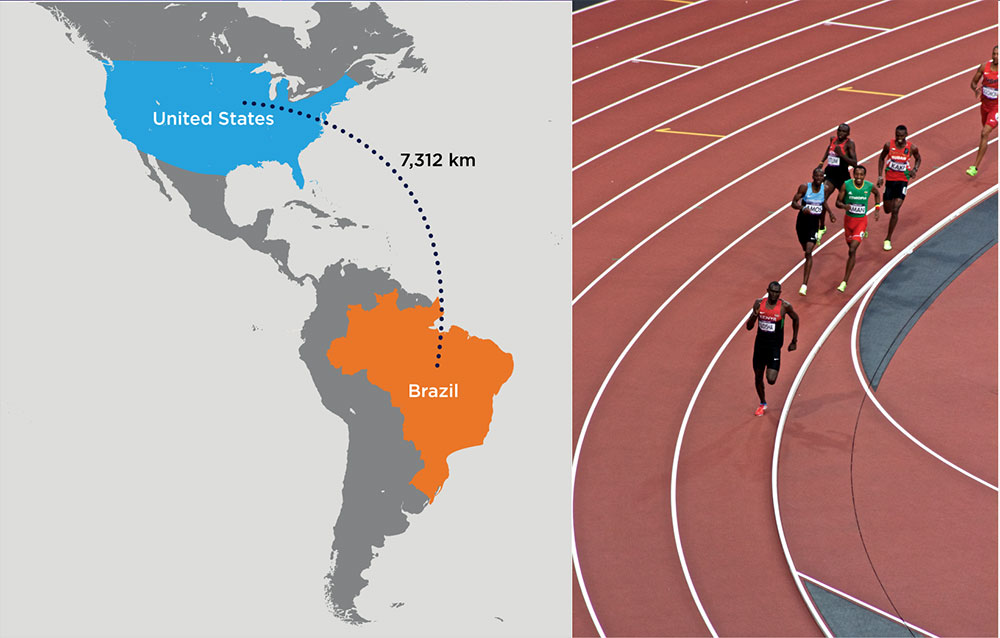We frequently ask: how far away is that? The concept of distance is very familiar to us. After all, we need to factor in distance whether it's for a trip around the corner or across the country. One way to define distance is the ground covered between two points.
Distance plays an important role in many Olympic sports. The ability to travel the distance around a track, across a swimming pool, or down the road faster than anyone else may lead to a gold medal. Olympic events like the marathon show how some athletes can excel over what most of us consider to be a very long distance.
Despite how large some Olympic distances may seem, they are just a tiny fraction of the lengths we see across space. For comparison purposes, let's look at everything in the widely accepted unit of meters. In the metric system, a kilometer simply means a thousand meters (which is equivalent to about 0.62 miles). The longest Olympic track and field event in terms of distance is the 50-kilometer, or 50,000-meter, race walk.
By comparison, it is about 7700 kilometers, or 7.7 million meters, from New York to Rio de Janeiro for those athletes and spectators making that trip. The distance around the equator of Earth is about 40 million meters. In space, however, distances get much, much bigger. It's about 150 billion meters to the Sun, and 40 quadrillion meters to Proxima Centauri, the next nearest star to us. That's a 40 followed by another 15 zeroes.

Runners credit: Paul Rowlett; Map credit: NASA/CXC/K.Divona
Because numbers get so large so quickly when talking about objects in space, astronomers most often use the unit of light years to describe distance. While it sounds like an amount of time, a light year is, in fact, a distance. It is equivalent to how far light travels over the course of one year, roughly 9,000 trillion meters. Rather than keeping track of all of those zeroes, we can that same distance to Proxima Centauri as being about 4.2 light years away. That's helpful because Proxima Centauri is actually very close to us, compared to many other things in space. Take the center of Milky Way galaxy, which is about 26,000 light years away. And astronomers have observed light left over from the Big Bang at some 13.7 billion light years away.
So whether it is around a track or across a galaxy, distance is something worth keeping in perspective.